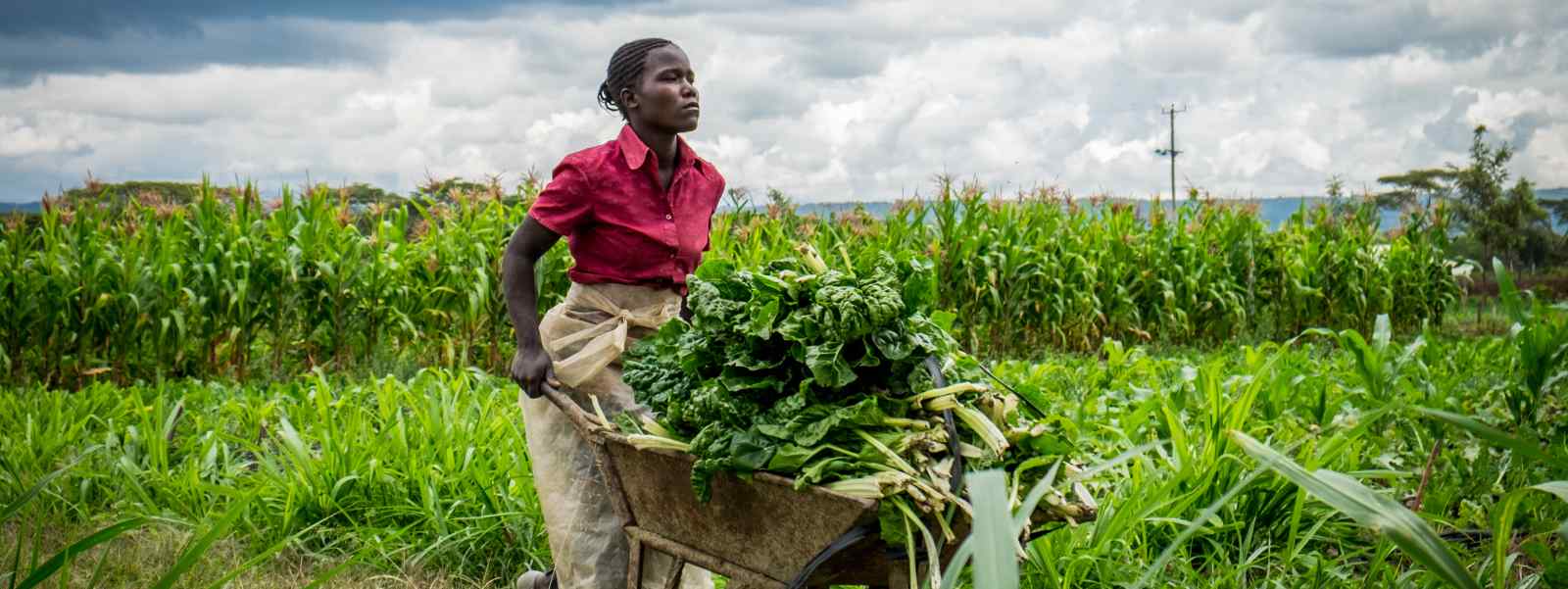
A low-cost sensor system to detect nutrients in soil for improved fertility is being developed by researchers to help tackle food insecurity in Kenya.
The project is taking inspiration from ancient art and design-based printing processes such as wood blocking, combined with local natural materials such as chimney soot, egg, newspaper and enzymes from local plants and bacteria to make extremely low-cost soil sensors.
Ancient technique
Woodblock printing allows lots of copies to the same pattern to be created and has been around for about 2,000 years. The printing inks were also made from natural materials. Instead of using these to print artwork, they will be used to make very biodegradable single use sensors.
The collaboration, led by the University of Strathclyde, will develop the novel sensor for farmers to regularly test for the two most depleted soil macro-nutrients in Kenya, nitrate and phosphate.
More than 80% of Kenya’s population is dependent upon agriculture for employment, income, or food security, but a large proportion of the population are food insecure, with more than a quarter of children under five suffering from malnutrition, according to UNICEF.
Poor soil
Exhausted and nutrient poor soil is a major impediment to high crop yields, and the situation is worsened by population growth reducing the size of land parcels and farmers being pushed into drier, lower quality land areas vulnerable to drought. Other challenges include conflicts around competition for land and people dropping out of nomadic life to move to settled communities dependent upon food aid.
Increases in agricultural productivity are needed and one way to improve crop yield is to improve soil fertility. In-field measurement tools can be used by farmers to understand the spatial changes in nutrient concentration within a field, and how these vary over time, but no accessible low-cost technology exists.
The alternative to in-field testing is the use of soil laboratories, but these are few and expensive to use, far away from the farm and provide a single measurement which is not representative of the whole area farmed. Most smallholders are in the dark about the nutrition status of their soil and how it changes in response to different soil amendment approaches.
Lead researcher, Dr Andrew Ward from the University of Strathclyde’s Department of Civil and Environmental Engineering, said: “This project takes inspiration from woodblock printing, one of the oldest forms of printing in the world. It uses plant-based inks to create artwork and printed information. Instead of printing art, we are going to borrow these techniques, but combine them with functional materials, such as carbon black and enzymes to make biodegradable single use sensors.
We want to see if we can make a sensor using only resources that are available local to the farm – for example, could we use yesterday’s newspaper, some egg yolk as a binder, carbon black from chimney soot and some plant-based proteins to produce the sensors.
“Ultimately, we aim to create novel zero waste sensor for nitrate and inorganic phosphate that can be manufactured entirely in-country for easy use on farm to provide timely information on soil fertility needs.
"The long-term goal of the technology is to build sustained capacity in Kenya to improve soil fertility, crop yields and therefore food security.”
Researchers say that in the long term, this could be delivered to farmers as a “factory in a box” containing the tools needed for sensor manufacture, or as an information pack that shows how to gather the resources required and print sensors.
Kenyan trials
Research Scientists at Kenyatta University in Nairobi, led by Dr Ezekiel Njeru of the Department of Biochemistry, Microbiology and Biotechnology, and printing specialists at Glasgow School of Art, will collaborate with Strathclyde to develop the sensor in the UK, employing a researcher from Kenya. Once a proof of concept has been created, the researcher will return to Kenya with the knowledge and understanding to recreate the sensor and test performance in greenhouse trials.
Researchers say that knowledge and learning from the project could also support the manufacture of nature based and zero waste sensors to support UK agriculture and the transition to net zero.
The project, which is funded by the International Science Partnerships Fund (ISPF), awarded by the Engineering and Physical Sciences Research Council on behalf of UK Research and Innovation (UKRI), could also influence the wider region, with 20 million people across Kenya, Ethiopia and Somalia being food insecure and facing similar challenges.
The project will also involve a series of workshops with communities, industry and policy makers.